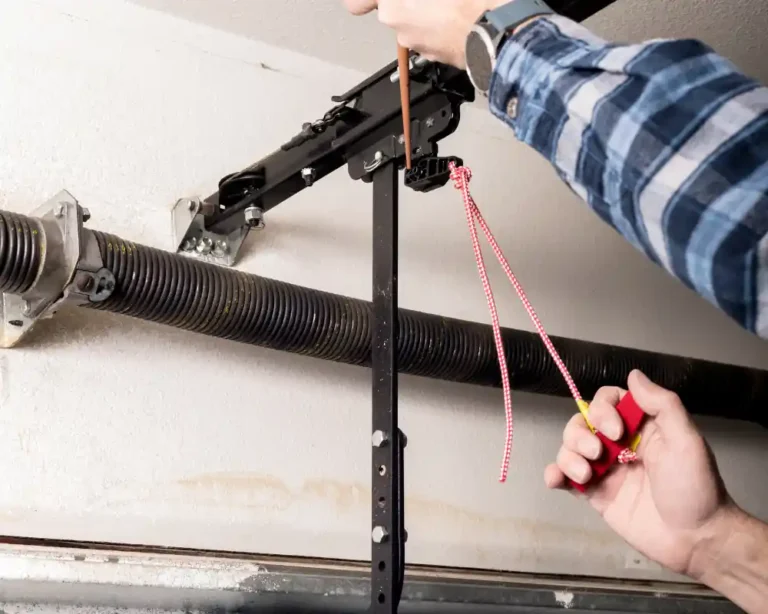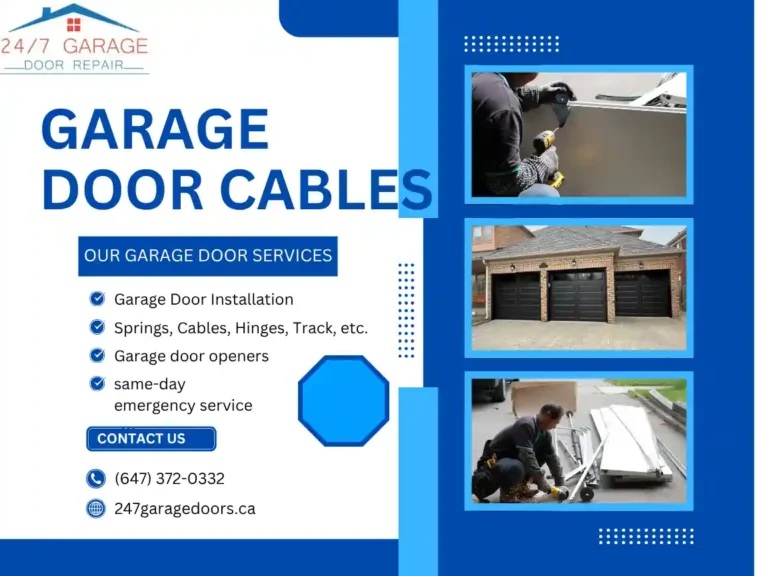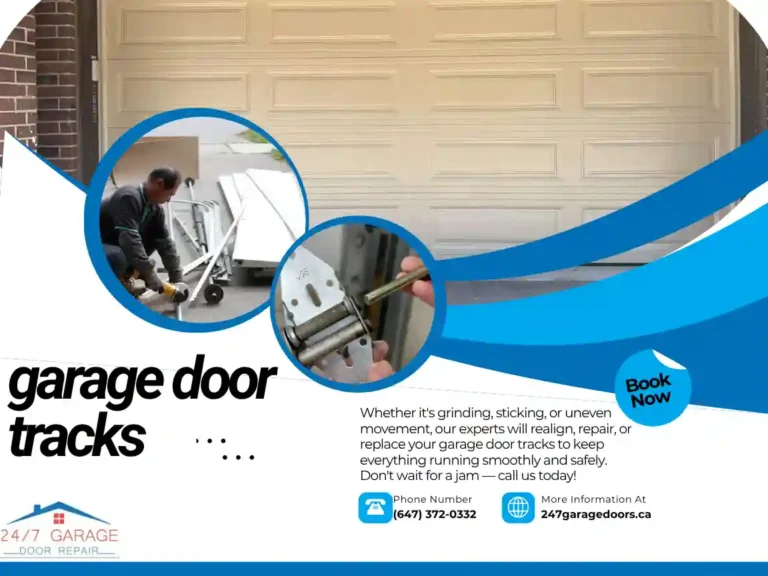Your garage door’s springs do the heavy lifting—literally. These tightly wound metal coils are responsible for counterbalancing the door’s weight, enabling smooth opening and closing. But when they snap or lose tension, the result is a dangerous, often inoperable door. In this comprehensive guide, we’ll explore everything you need to know about garage door repair springs in Ontario, from spotting early warning signs to understanding the difference between torsion and extension springs. Whether you’re a seasoned DIY enthusiast looking to fix garage door springs Ontario-style or a homeowner ready to call a professional, we’ll help you minimize risks, maximize longevity, and maintain a safe, reliable door.
Why Garage Door Springs Matter
Garage doors weigh anywhere from 100 to 400 pounds, depending on materials and insulation. Without properly functioning springs, your opener’s motor strains more, or you might be forced to lift a very heavy door manually. Common benefits of well-maintained springs include:
- Easy Operation – The door glides smoothly on tracks.
- Extended Opener Lifespan – A balanced door puts less stress on the motor.
- Enhanced Safety – Springs help prevent sudden door drops, reducing injury risk.
- Lower Energy Bills – A well-sealed, balanced door helps maintain consistent indoor temperatures.
If springs fail, the door may slam shut unexpectedly or refuse to open at all, posing security and safety hazards.
Torsion vs. Extension Springs
In most Ontario garages, you’ll find one of two main spring types:
- Torsion Springs
- Located above the door, running parallel to the top section.
- Twist under tension, offering a smoother, more controlled lift.
- Generally last longer and support heavier doors.
- More expensive than extension springs but worth it for durability.
- Extension Springs
- Mounted along the sides of the door, stretching and contracting to balance the door’s weight.
- Typically cheaper but can wear out faster.
- Can be more prone to violent snapping if not equipped with safety cables.
Knowing which type you have helps you decide on the right spring replacement cost estimate and repair approach.


Table: Torsion vs. Extension Springs – Quick Comparison
| Spring Type | Location | Typical Lifespan | Cost Range (per spring) | Pros | Cons |
|---|---|---|---|---|---|
| Torsion Springs | Overhead shaft above the door | 10,000–20,000 cycles | $80–$150 (basic) | Smoother motion, safer, durable | More expensive, complex install |
| Extension Springs | Sides of the door tracks | 5,000–10,000 cycles | $40–$80 (basic) | Less expensive, simpler design | Higher snap risk, less lifespan |
Keep in mind that better-quality, oil-tempered springs can increase both cost and service life.
Early Warning Signs of Spring Trouble (Garage Door Repair Springs)
- Door Feels Heavy
- If you manually lift the door and it’s abnormally heavy, springs might be losing tension.
- Uneven Movement
- One side of the door lifting faster than the other indicates unbalanced springs.
- Loud Snaps or Bangs
- A snapping sound could mean a spring has broken entirely.
- Gaps in the Coils
- Torsion springs may show visible separation between coils if they’re overstretched or cracked.
- Door Won’t Stay Open
- If the door slowly slides down from an open position, the springs aren’t fully supporting its weight.
Spotting these issues early can save you from emergency fixes or extensive damage.
DIY vs. Professional Torsion Spring Repair
DIY Considerations
- Pros: Cost savings on labor, satisfaction of tackling your own project.
- Cons: High tension can cause severe injuries if mishandled, possible warranty voids, specialized tools needed.
Professional Repair
- Pros: Experts handle tension bars safely, ensure proper alignment, provide warranties.
- Cons: Labor and service fees typically raise overall costs.
If you lack experience with heavy-duty springs, hiring a professional torsion spring repair service in Ontario is the safer bet.
Step-by-Step: Replacing Extension Springs (Garage Door Spring Maintenance)
Note: This overview is for informational purposes. Extension spring replacement is still risky without the right tools and skills.
- Gather Tools
- Safety glasses, gloves, ladder, wrenches, and clamps.
- Release Tension
- Unhook or loosen the spring’s tension via the door’s track brackets.
- Attach Safety Cables
- If none exist, thread cables through each spring to restrain it if it snaps.
- Remove Old Springs
- Unbolt the worn spring from the track and door bracket.
- Install New Springs
- Match length and weight capacity to door specs.
- Tighten and Adjust
- Slowly adjust tension so the door stays balanced halfway up.
- Test Operation
- Open/close a few times to ensure smooth travel without jerking.
Exercising caution and working with a partner can mitigate some risk, but torsion springs demand even more expertise.
Cost Breakdown for Spring Replacement
1. Spring Cost
- Basic Torsion Springs: $60–$120 each, higher for premium or extended-lifecycle versions.
- Extension Springs: $30–$80 each, depending on quality and brand.
2. Professional Labor
- Service Call Fee: $50–$100 in Ontario, typically.
- Installation Labor: $100–$200+ for standard two-spring replacement.
3. Additional Parts
- Safety Cables: $10–$30 per set if you don’t have them.
- Bearings, Brackets: Replacements can add $20–$60.
Budgeting $150–$300+ for a two-spring replacement is common, but door size, spring quality, and local labor rates can push costs higher.
Climate Impact on Garage Door Repair Springs (Fix Garage Door Springs Ontario)
Ontario’s winters bring sub-zero temperatures, while humid summers can encourage corrosion:
- Cold Weather Stress
- Metal springs become brittle, increasing snap risk.
- Salt Exposure
- If salty slush accumulates in the garage, springs might rust faster.
- Temperature Fluctuations
- Rapid changes cause metal to expand or contract, stressing coils.
Opting for oil-tempered or galvanized springs may extend their lifespan under these conditions.
Table: Spring Longevity vs. Cycle Ratings
| Cycle Rating | Estimated Lifespan | Ideal Usage |
| 10,000 cycles | ~7–10 years | Standard residential, 2–3 opens/closes per day |
| 20,000 cycles | ~10–14 years | Heavier usage, large families or frequent deliveries |
| 30,000+ cycles | 14+ years | Commercial or high-traffic garages |
One cycle = one full open and close. Spending extra on higher cycle springs can pay off for daily multiple-car families.
Safety Best Practices
1. Use Proper Tools
- Torsion springs require winding bars; never substitute screwdrivers or random rods.
2. Wear Protective Gear
- Safety goggles, gloves, and closed-toe shoes are non-negotiable.
3. Unplug the Opener
- Prevent accidental activation during manual adjustments.
4. Don’t Force Components
- If something jams, reevaluate your approach; forcing a stuck bracket can cause a chain reaction of damage.
Following these protocols drastically reduces injury risks and property damage.
Maintenance Tips to Extend Spring Life (Garage Door Spring Maintenance)
- Lubricate Springs
- A silicone-based spray or lightweight machine oil helps reduce friction.
- Check Door Balance Monthly
- Disconnect the opener and lift halfway. If it doesn’t stay, adjust or replace springs.
- Clean Debris
- Road salt, grit, and moisture accelerate rust on metal coils.
- Inspect Cable Integrity
- Frayed or worn cables can snap and let springs recoil dangerously.
- Schedule Yearly Tune-Ups
- A pro can detect subtle coil damage or bracket misalignments early.
Preventive care costs less than emergency spring replacements and fosters safer operation.
When to Call a Pro (Professional Torsion Spring Repair)
Despite your willingness to DIY, certain scenarios warrant professional help:
- Spring is Fully Snapped – Torsion bars with no tension can be tricky. A pro ensures correct winding.
- Heavier Overhead Doors – Commercial or double-wide doors might weigh hundreds of pounds.
- Lack of Tools – Attempting to wind springs with makeshift rods is extremely risky.
- Warranty or Insurance – Some door warranties or insurance policies mandate certified repairs.
Safety cables, correct torque settings, and precise measurement are critical details that an expert handles seamlessly.
Real-World Scenarios
- One Spring Breaks, The Other is Fine
- Typically, pros recommend replacing both if they’re the same age; the second spring may soon fail as well.
- Door Jams Halfway
- Could be a snapped cable or bracket issue, not just the spring. A thorough inspection clarifies the culprit.
- Spring Just Feels “Weak”
- Over time, springs lose tension. Adjusting them might buy time, but if they’re near the end of their cycle rating, replacement is often wiser.
- Strange Squeaks, Random Pops
- Could be mild coil friction or an early sign of cracks in the metal. Prompt lubrication or minor adjustments help dodge a complete break.
Staying alert to these nuances helps you respond before minor annoyances become major expenses.
Conclusion: Keeping Your Springs in Prime Shape
Garage door repair springs may not be top of mind—until they break, that is. By recognizing early warning signs like uneven lifting or loud bangs, you can schedule repairs proactively, preventing sudden door failures. While some light maintenance is feasible for experienced DIYers, advanced tasks, especially involving torsion springs, are best left to professionals who know how to manage high-tension parts safely. In Ontario’s climate, a combination of preventive care—regular lubrication, balance checks, and rust mitigation—will drastically extend spring life. If you’re unsure about tackling tension adjustments or if your door is significantly heavier than average, calling a trained technician is the safest, smartest route.
For detailed cost insights or scheduling fix garage door springs style, consider a reputable local company with expertise in cold-weather spring solutions. If you need more advanced insights into door repair costs and tune-up strategies, explore this article for additional guidance. By staying proactive and informed, you’ll ensure your springs, and ultimately your garage door, remain secure, efficient, and hassle-free.










